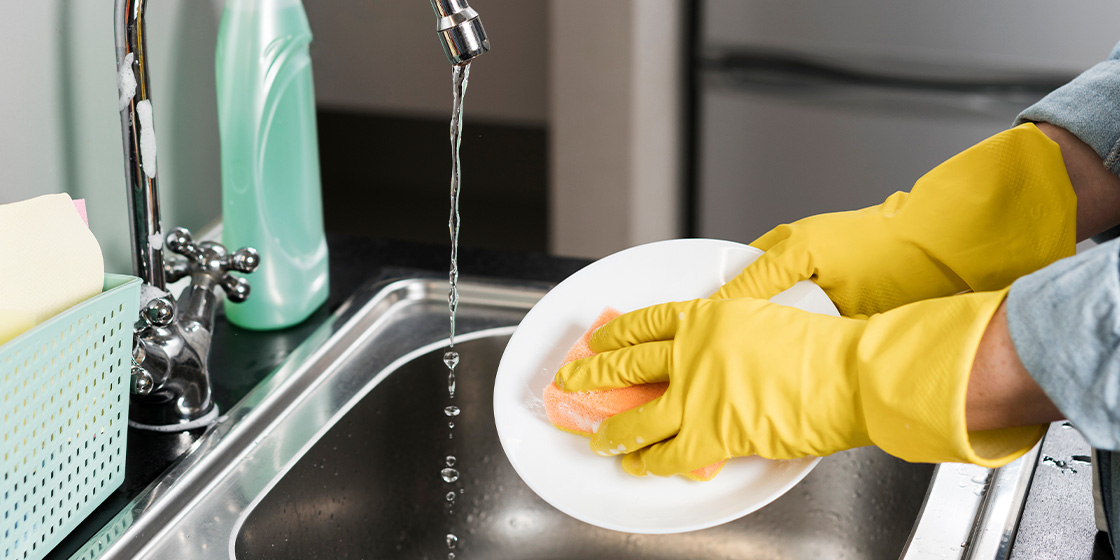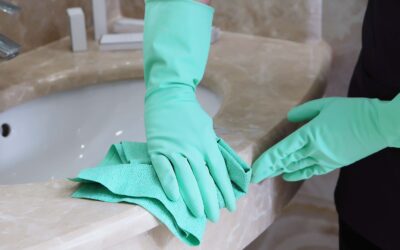I am sure that some of you must have came across with the term “waterproof” and “water resistant” from other products before, eg. from watches, jackets, electronic products etc.
So, let me ask you a question:
Are rubber gloves waterproof or water resistant?
Wait, aren’t they basically meaning the same thing? I guess some of you might have just stunned for a couple of seconds to get the logic right and trying to give me the correct answer now, isn’t it?
The short answer is:
- waterproof and water resistant are not the same concept (they are not synonym either!), and
- rubber gloves are actually waterproof!
“Why?”, you asked.
No worries, I will explain to you about the difference between the term “waterproof” and “water resistant” and their main difference in this article.
In this article, we will talk about:
- The difference between the term “waterproof” and “water resistant”
- What makes rubber gloves waterproof?
- Why is it important to know the difference?
- How rubber gloves are tested and graded for waterproof?
The difference between the term “waterproof” and “water resistant”
Waterproof meaning impervious to water. What does it mean?
It means that if something is waterproof, it does not let water to pass through it.
Water resistant is the ability to resist the penetration of water to some degree but not entirely. It does not allow water to pass through easily.
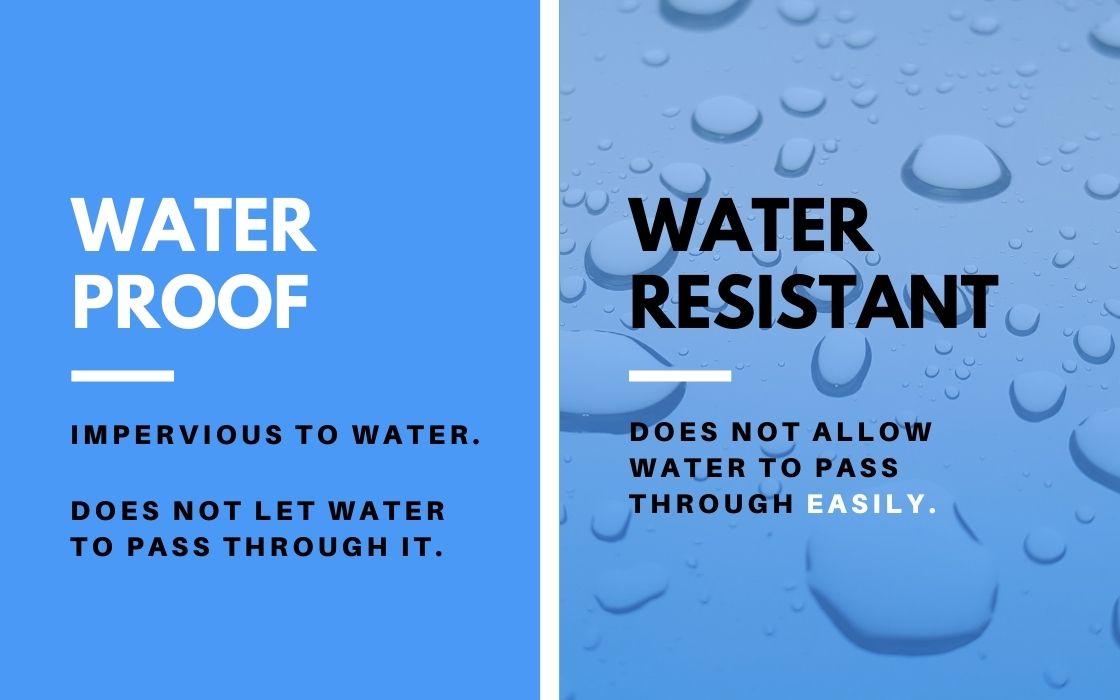
So, why would it be important to know the difference between waterproof and water resistant when it comes to gloves selection?
You may ask: Since waterproof sounds like the best protection, can’t I just go for waterproof gloves every time?
All right. Before I tell you the reason, first we need to understand what makes something waterproof, in this case, we will be focusing on rubber gloves products.
What makes rubber gloves waterproof?
Two factors:
- First, it is about the material that makes the product.
- Second, it is about the structure of the product itself.
In this section, let us focus on rubber gloves.
When we talk about the material for rubber gloves, latex is what makes the rubber gloves waterproof.
And for the structure of the product, unsupported rubber gloves are manufactured via dipping process, and the final product is a simple structure of a one-piece rubber gloves.
Unlike watches, there is no such thing as waterproof watch, since the structure of the watch is complicated and involve a lot of parts and mechanism which makes it impossible to be waterproof.
Why is it important to know the difference?
As you know, there are different types of gloves out there and it is extremely important to choose the right one that suit your applications needs.
No doubt waterproof sounds like delivering the best protection, but not all gloves are designed to be waterproof.
Also, it will mean a very different thing when you are searching for waterproof gloves like rubber gloves or water-resistant gloves like hiking gloves.
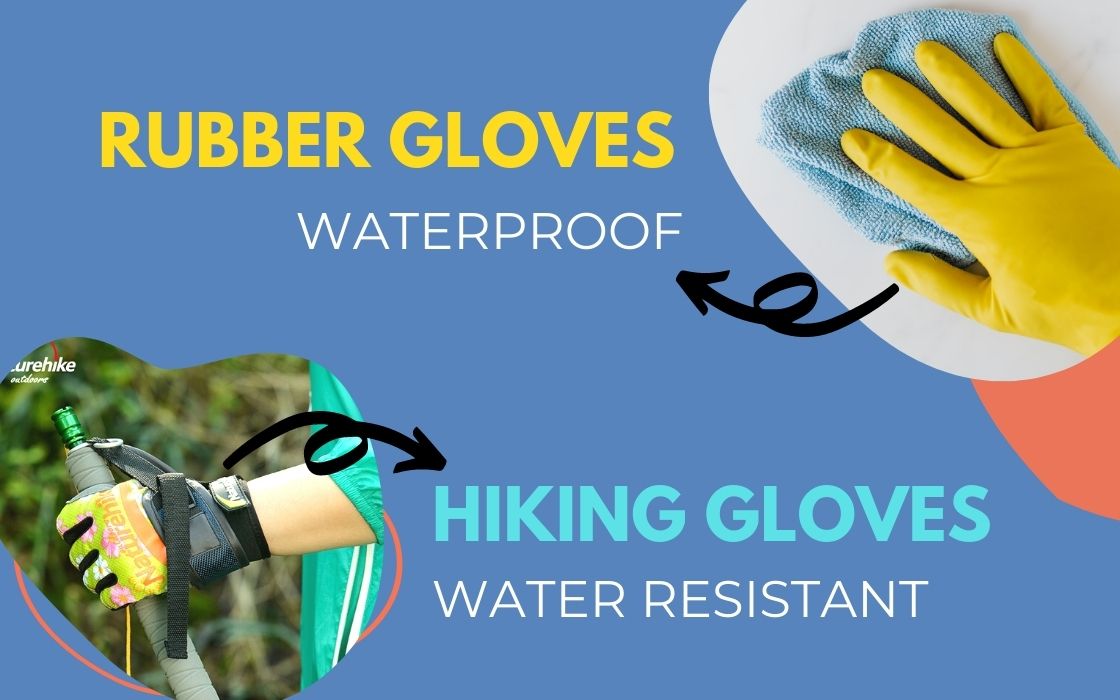
If a glove is described as water resistant, most probably it is being treated/ coated with a protective layer eg. water repellent coating, fabric spray etc. that will repel the water to some degree for a certain amount of time.
Let’s take hiking glove as an example.
Water-resistant hiking gloves will keep your hands dry from accidental splashes or light rain, but they are not designed to be used in wet environments. Water will still enter the glove if it is submerged in water for a long time.
Water resistance may be a feature in hiking gloves to provide ample exchange of moisture through glove. If hiking gloves are designed to be waterproof, it may lock moisture inside the glove. Thus, causing discomfort to the user.
So, to summarize it up, just keep in mind that waterproof and breathability do not come together.
Unlike hiking gloves, our unsupported household gloves are designed to be waterproof.
Why do household gloves need to be waterproof? Because house chores always involve water!
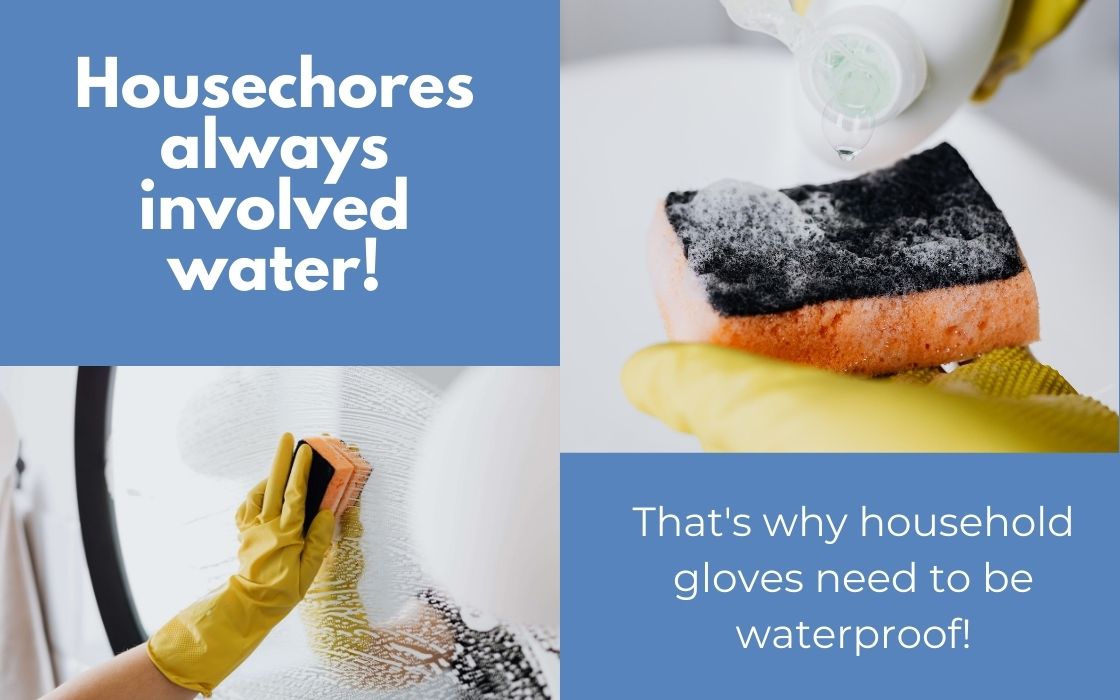
Imagine this: dishwashing, janitorial cleaning, wiping the floor all these jobs are using a lot of water. Hence the waterproof feature is necessary to prevent water from seeping into the glove and causing discomfort to the user when carrying out their daily housework.
At the same time, we have designed a layer of cotton flock lining which helps to absorb moisture and keeps users’ hands from longer-lasting dryness.
I hope now you have get the concept right.
By understanding this concept, you will be able to tell the water protection performance of other products as well, eg. watches, shoes, garments, electronic products etc.
How rubber gloves are tested and graded for waterproof?
If a glove does not protect against liquids and gas, it could be hazardous to wearers. Try to imagine this: if chemicals can penetrate through the holes in the glove, what would happen?
That’s why under EN374-2:2014, two tests will be carried out to assess the resistance of the glove to penetration (or freedom from holes). The two tests are as below:
-
Air leak test:
This test involves inflating a glove with air pressure and then submerging it in a tank of water. Any leaks are identified by visible bubbles.
-
Water leak test:
This test involves suspending a glove filled with water and examining its outer surface for water droplets.
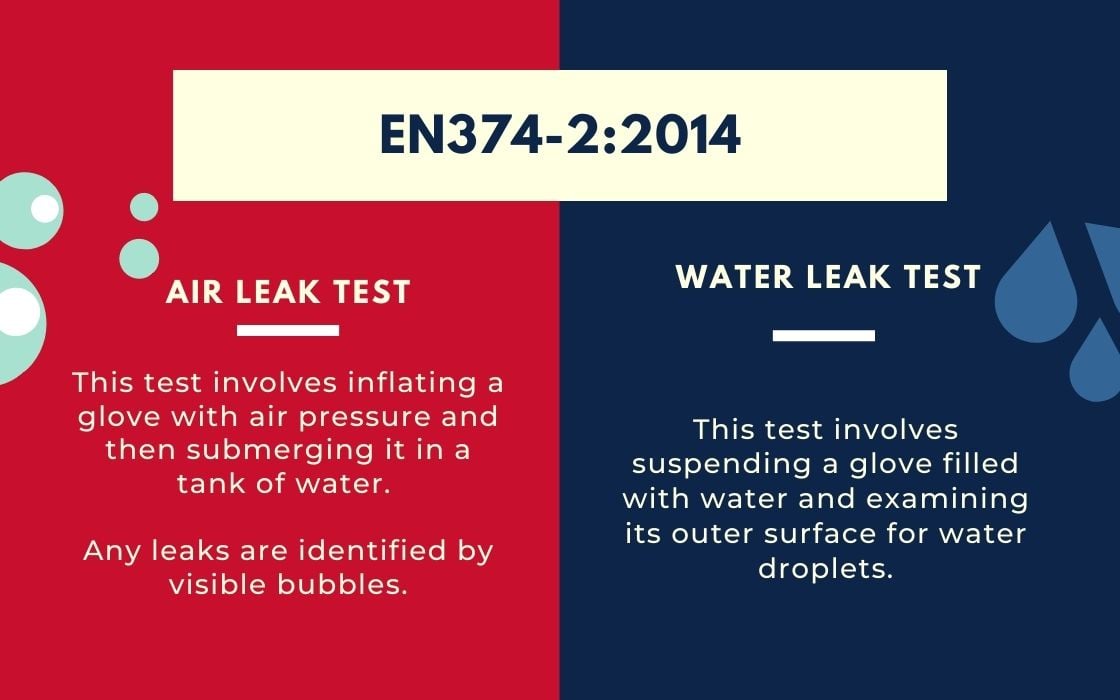
While the term “waterproof” means that it does not let water to pass through it, the term “penetration” is defined in EN 374 as the movement of a liquid and/or micro-organism through porous materials, seams, pinholes, or other imperfections in a protective glove material on a nonmolecular level.
So, these tests not only show that a glove is waterproof by assessing the resistance of the glove to penetration, but more importantly it is to ensure that the protective gloves are able to protect against dangerous chemicals and microorganisms.
Recap
I hope this article has helped you in understanding a little bit more about the difference between waterproof and water resistant, what makes rubber gloves waterproof, why is it important to know the difference, and how rubber gloves are tested and graded for waterproof.
Get in touch with us if you’re interested in learning more about what we have to offer or would like some professional advice from one of our experts.
If you’re interested in reading more articles like this, subscribe to our blog and follow our Linkedin page for the latest updates

